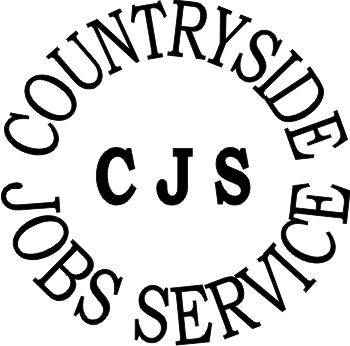Press
and other media matters
If you
are promoting your countryside project you will want to get some good coverage
in your local media. Here are some ideas and hints for you to use.
 Build
up a relationship with key people in the media. Ring them up when you've got a
particularly good story and tell them. Notice whose byline is above the nice coverage
in your local paper and ask for them by name. Don't forget the radio, too. BBC
local radio is almost always your best place to start.
Build
up a relationship with key people in the media. Ring them up when you've got a
particularly good story and tell them. Notice whose byline is above the nice coverage
in your local paper and ask for them by name. Don't forget the radio, too. BBC
local radio is almost always your best place to start.
Aim at the local media only unless you really do have a story
of national interest. This means that you need to read/listen to the local media
and see what stories they like. That's right, you've twigged it, 'brave cat
stuck up tree' is more newsworthy than 'rare habitat enhanced'.
Get your timing right. Media is all about deadlines so be sure
not to pester radio reporters at 5 minutes to the hour (they're about to do
a news report) or weekly newspaper reporters the day of their weekly deadline
- unless the story is massive and really urgent. Common sense will normally
tell you when these deadlines are but don't be afraid to ask.
Forget the local TV news. Always send them the stuff but don't
waste your time trying to get them to come. Either they will or they won't and
nothing you can do will affect it (probably). They also have a habit of saying
things like 'we should be able to come, so can you wait for an extra half-hour
before you start' and then not turning up. Don't make any special arrangements
for the benefit of the TV unless you can actually see them there in front of
you. If you are lucky enough to get their attention, specialist programmes (like
Countryfile or local versions thereof) are a lot more reasonable. It's usually
worth putting yourself out for them, and the coverage you get will be a lot
better.
A good press release is an art. Luckily it's not too hard
to learn.
1. All press releases should be about something newsworthy -
the practice of sending out press releases about nothing in particular does
not work, and it is better to not bother. Think about what you are writing.
Would you want to read it in the newspaper or hear it on the radio?
2. All press releases should be double spaced, with wide margins.
3. Press releases should look good, and not be scrappy or untidy. Presentation
matters, as does speelling.
4. Press releases should have the words "PRESS RELEASE"
written large upon them, to make it clear what it is.
5. The practice of using an "Embargo" date or time, often recommended
as standard, is not sensible unless there is a good reason, eg if you are publicising
an speech due to be made by a dignitary, and releasing the text in advance.
EXAMPLE
PRESS RELEASE
A snappy title
This is the text of the release. The first few lines must get the attention
of the reader. Use short sentences. Site Manager Michelle Chadwick said:
"Use quotes, they're great!" In the text you must
say do not and have not, etc. In quotes you can say "Doesn’t
and Haven’t" and get away with it. Write in simple English
and do not use jargon. Refer to places and organisations by full titles,
not initials or abbreviations. For example, do not say 'The Council'
or 'BDC' but 'Borsetshire District Council'
Break up the text with paragraphs. Topics which tend to get attention
include, children, sick children, disabled people, cuddly animals, misfortune,
elderly people, embarrassment, local connection, love angle, green issues,
criminals. A prize to anyone writing a release including all these.
Never, ever, go on for more than one page.
Try to end on a high(ish) note. "We all had a good laugh,"
said Michelle, "when we saw the draft press release!"
RELEASE ENDS
Further information: Title of event,
short description (<6 words), location, time, date, at least two
contact names and phone numbers which should be contactable any time
- even your home number or mobile number if necessary.
Photo opportunity: location, time, date.
|
In addition you should consider including a sheet of 'Information
for Editors'. This would be the same for every release, and contain general
information about your project. A good leaflet would do the job, but the media
like to have it all laid out so why not construct a special sheet (yes, just
one sheet), and include on it who you are, what you do, why, your great achievements,
brief history, sponsors, important species/habitats and so on. This then saves
you from filling up every press release with this stuff, helps you to keep the
actual release down to one page (so important), and also makes sure that the
editors get used to the message and maybe even remember it from one month to
the next.
Posters should have a one or two word message clearly visible
from 10m or further, such as "Guided Walk", "Ghost Walk",
"Dormouse Day" or whatever. In smaller print have perhaps 10 words
of further description; date, time, place and a phone number. That should do
it. Do not make a poster too detailed. A4 posters are cheaper and more popular
with shopkeepers. If you have the means, why not do some A4 and some A3, so
you have a choice. If you can afford it, laminate a few of them for outside
display. One colour (eg black on coloured paper) is also usually fine, and even
if it is for inside display make sure it is photocopied or laser printed and
not printed on an inkjet printer as this will run and crinkle.
Posters should normally go up 10 days to one week before
the event, and come down immediately afterwards. Put posters up in shops and
anywhere else suitable, depending on the sort of project you are doing. if you
can, put a poster or two close to the walk starting point. If it is visible
from the road, this is even better.

 Build
up a relationship with key people in the media. Ring them up when you've got a
particularly good story and tell them. Notice whose byline is above the nice coverage
in your local paper and ask for them by name. Don't forget the radio, too. BBC
local radio is almost always your best place to start.
Build
up a relationship with key people in the media. Ring them up when you've got a
particularly good story and tell them. Notice whose byline is above the nice coverage
in your local paper and ask for them by name. Don't forget the radio, too. BBC
local radio is almost always your best place to start.